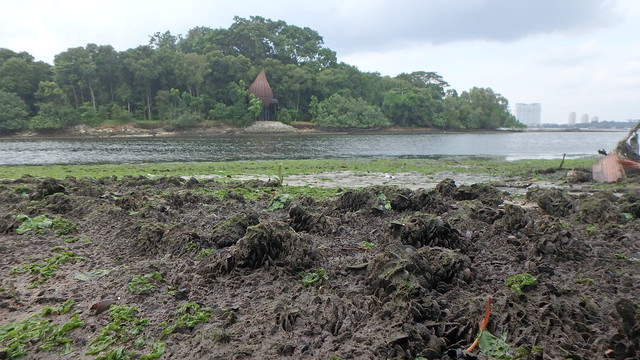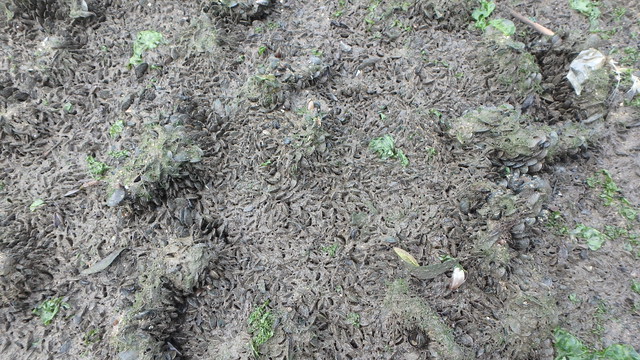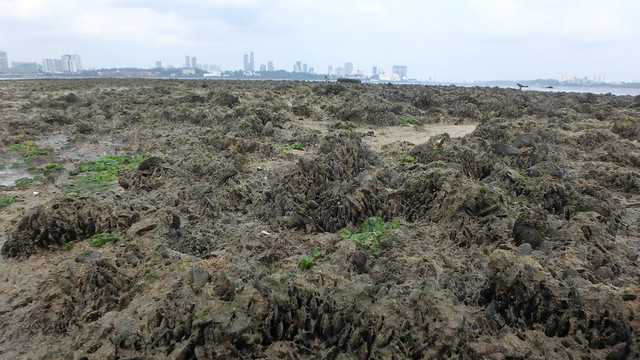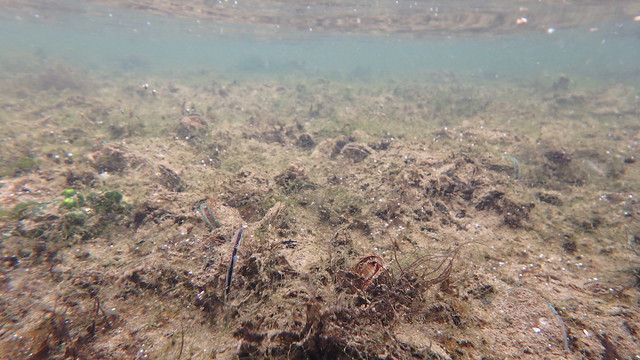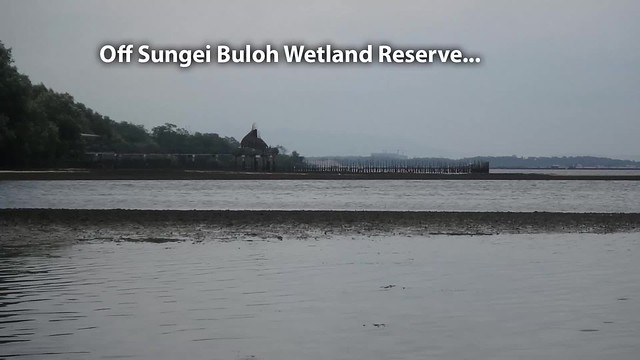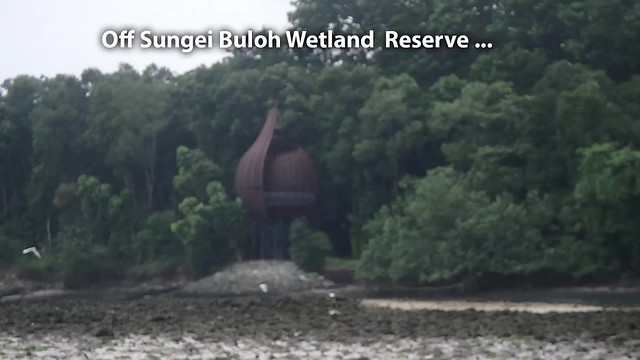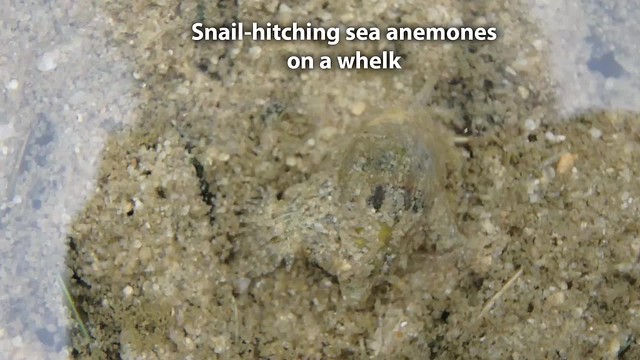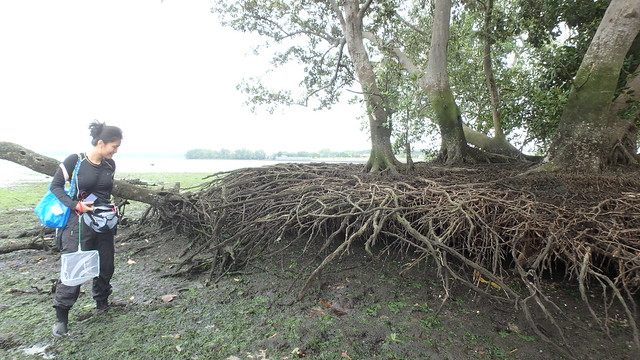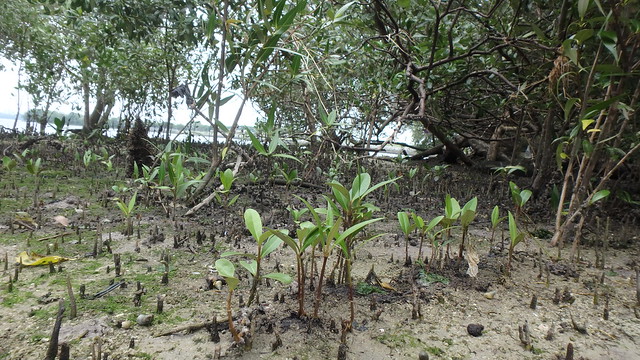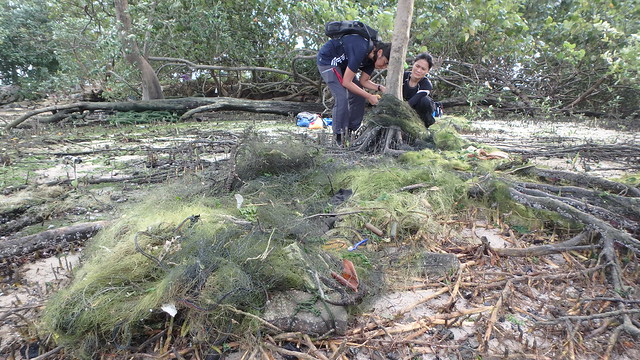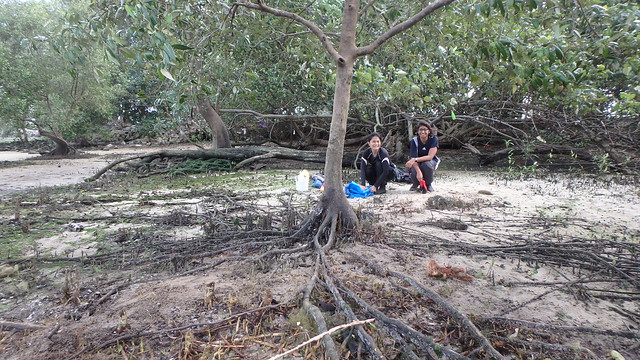I was astonished to see that mussels and clams have formed dense beds over the entire shore at Kranji! This shore used to be sandy/muddy and full of anemones.
Even more astonishing, the water was super clear! Alas, we also came across a humungous abandoned net which the supergals -- Ywee Chieh and Su -- easily removed. Hurray!
Large portions of the shore were covered by mussels that formed dense beds with their byssus threads (fibres that the clams produce to attach to hard surfaces).
They don't look like the usual tiny Nest mussels that I've seen on other shores. These ones even build upwards like 'clam condos'! I also saw some Green mussels among them.
The tide wasn't very low, but the water was super clear!
Here's a video of the clam beds in the surprisingly clear waters.
There are lots of Mangrove horseshoe crabs in this area. Here's a video of a pair (the male getting a free ride on top of the female) in the surprisingly clear waters of Kranji today. At one point, the female was obviously trying to burrow into the ground, but the dense clam build up just made it so difficult that she gave up. Ywee Chieh and I saw two horseshoe crabs whose upper shell was completely covered in mussels! (My photos of it didn't come out well). We gently removed the mussels.
We were here to help Nick find some branch-tentacled anemones which I have not seen elsewhere. The anemone is tiny and here is what it looks like. My last visit here was more than 5 years ago in Jul 2012. The shore was then mostly muddy silty sand dotted with lots of tiny anemones.
With the massive change in the habitat, we could not find the branch-tentacled anemones. But there were still lots of snail-hitching anemones which were stuck on living snails of various kinds. Each tiny snail had one, two and more of these anemones!
This tiny patch of mangroves at Kranji is facing severe erosion.
Although in some parts, mangrove seedlings are sprouting.
Alas, we came across an abandoned net. The ladies released one small Mangrove horseshoe crab that was still alive. More about the net in this Project Driftnet blog post.
It didn't take long for us to remove the net. If only those who used the net just took the few extra steps and a few minutes to dispose of the net properly. Then animals will not be constantly trapped in the net. During my last visit here in Jul 2012, we also saw an abandoned net with about 80 horseshoe crabs trapped in it. It's so heartbreaking that people are not more responsible when fishing on our shores.
If you want to learn more and do more about horseshoe crabs at Kranji, join the Nature Society's Marine Conservation Group's Horseshoe Crab Research and Rescue effort.

